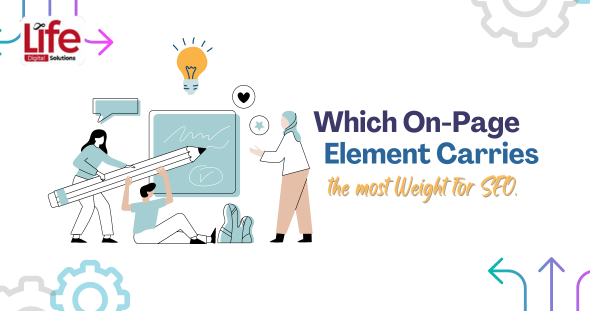On-page SEO can indeed seem like a daunting task due to its many moving parts, and knowing which elements to prioritize can be tricky. At Life Productions, the best SEO agency in Kolkata, we believe in optimizing all aspects of on-page SEO to achieve the best results. However, if you’re limited on time or resources, it’s crucial to know which on-page element carries the most weight for SEO to help you focus your efforts.
Understanding On-Page SEO
Before we dive into the specifics, let’s clarify what on-page SEO is and how it differs from other types of SEO.
The Three Types of SEO
- On-Page SEO: Also known as on-site SEO or content SEO, this involves optimizing the elements on your website’s pages, such as text, images, and links.
- Off-Page SEO: These tasks are performed outside your website, like link building and optimizing your Google My Business listing.
- Technical SEO: This can be both on-site and off-site and includes tasks like speed optimization and ensuring your pages are indexed properly.
Some sources may categorize SEO into more types, but most tasks fall into these three main categories. Now, let’s delve into the details of on-page SEO.
What is On-Page SEO?
On-page SEO refers to the optimizations you make to the content on your website’s pages. These changes help search engines better understand your content, potentially leading to higher rankings in search engine results pages (SERPs). These optimizations are typically based on keywords identified during the keyword research phase of your SEO strategy.
Key On-Page SEO Elements
Here are the critical elements of on-page SEO:
- Title Tag: This is the clickable headline displayed in Google’s SERPs, browser tabs, and link previews on social platforms. It’s the most important on-page SEO element, so it should be a brief and accurate description of your page’s content, include your main keyword, and be engaging to encourage clicks.
- Meta Description: Appearing below the clickable link in SERPs, the meta description should describe your content and encourage clicks. Use 150 to 160 characters for this.
- Heading Tags (H1-H6): These tags structure your content and show its hierarchy. The H1 tag should be your page’s main title, and you can use other headings (H2-H6) to organize your content effectively.
- URL: Ensure your page’s URL is clean, descriptive, and includes relevant keywords.
- Keywords: Use keywords naturally throughout your page to signal to search engines what your content is about.
- Internal Links: These links connect different pages within your site, helping search engines understand the structure and context of your content.
- External Links: Linking to credible external sites can boost your page’s authority.
- Images: Optimize images by adding keywords to their titles and alt tags to enhance SEO.
- Readability: Ensure your content is easy to read by using short sentences and paragraphs, avoiding keyword stuffing, and utilizing subheadings and lists.
- Word Count: While there are no strict guidelines, it’s generally recommended to have at least 200-300 words per page, with blog posts around 1000 words for better ranking potential.
Which On-Page Element Carries the Most Weight for SEO?
Your page’s title tag carries the most weight for on-page SEO. It forms the first impression users get of your page in SERPs, browser windows, and link previews on other platforms. The title tag is the most influential element in generating traffic to your website. Therefore, optimizing your title tags with your main keyword and making them highly engaging is crucial.
At Life Productions, we specialize in creating comprehensive Marketing strategies to ensure all on-page elements are optimized effectively.
Our expertise as the best SEO agency in Kolkata can help your website achieve higher search engine rankings and drive organic traffic. For more on-page SEO tips and a detailed checklist, contact Life Productions today!
